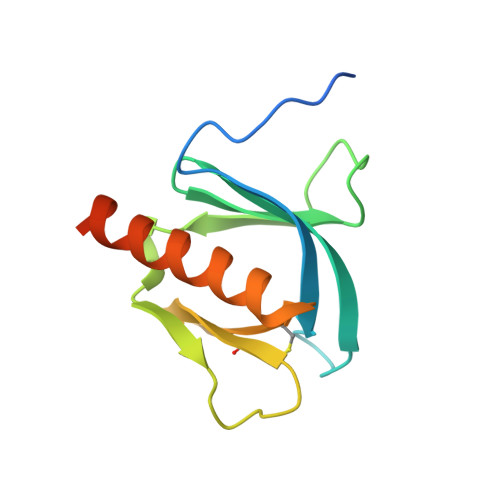Structural basis for discrimination of 3-phosphoinositides by pleckstrin homology domains.
Ferguson, K.M., Kavran, J.M., Sankaran, V.G., Fournier, E., Isakoff, S.J., Skolnik, E.Y., Lemmon, M.A.(2000) Mol Cell 6: 373-384
- PubMed: 10983984
- DOI: https://doi.org/10.1016/s1097-2765(00)00037-x
- Primary Citation of Related Structures:
1FAO, 1FB8, 1FHW, 1FHX - PubMed Abstract:
Pleckstrin homology (PH) domains are protein modules of around 120 amino acids found in many proteins involved in cellular signaling. Certain PH domains drive signal-dependent membrane recruitment of their host proteins by binding strongly and specifically to lipid second messengers produced by agonist-stimulated phosphoinositide 3-kinases (PI 3-Ks). We describe X-ray crystal structures of two different PH domains bound to Ins(1,3,4,5)P4, the head group of the major PI 3-K product PtdIns(3,4,5)P3. One of these PH domains (from Grp1) is PtdIns(3,4,5)P3 specific, while the other (from DAPP1/PHISH) binds strongly to both PtdIns(3,4,5)P3 and its 5'-dephosphorylation product, PtdIns(3,4)P2. Comparison of the two structures provides an explanation for the distinct phosphoinositide specificities of the two PH domains and allows us to predict the 3-phosphoinositide selectivity of uncharacterized PH domains.
- Department of Biochemistry and Biophysics and The Johnson Foundation, University of Pennsylvania School of Medicine, Philadelphia 19104, USA.
Organizational Affiliation:

















